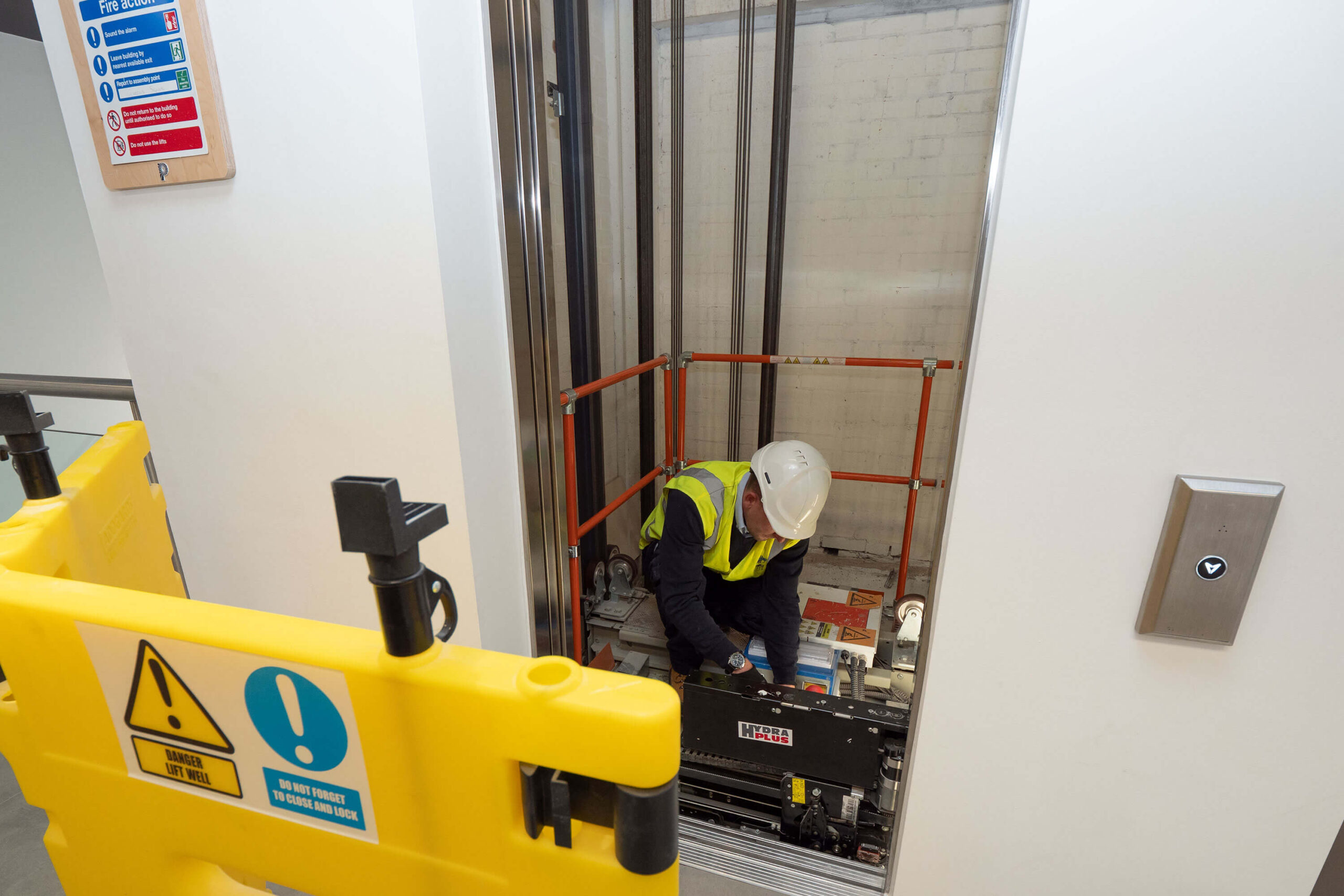Platform Lift Capacities Explained: Why They Matter for Lift Servicing
Platform Lift Capacities Explained: Why They Matter for Lift Servicing
Blog Article
A Detailed Approach to Enhancing Efficiency With Strategic Lift Repair Approaches
A organized and critical technique to lift repair and maintenance is imperative to make best use of performance and decrease downtime. By addressing typical lift issues, executing positive upkeep measures, and creating targeted repair work plans, facilities can enhance their lift systems to run at peak efficiency degrees.
Relevance of Lift Performance Optimization
Understanding the importance of optimizing lift efficiency is vital for making sure reliable and efficient vertical transportation systems in various buildings and structures. Lifts are essential elements of modern infrastructure, giving vertical wheelchair for residents and goods within buildings of varying elevations. By optimizing lift efficiency, structure owners and center managers can boost individual experience, improve power performance, and rise total functional effectiveness.
Efficient lift performance optimization involves various variables, including rate, capacity, energy upkeep, safety, and usage demands. Appropriately enhanced lifts can decrease wait times for customers, especially in high-traffic buildings, leading to boosted satisfaction and productivity. Furthermore, optimized lifts add to energy savings by making use of sophisticated control systems and modern technologies that reduce power intake without endangering efficiency.

Identifying Common Lift Issues
Determining common lift concerns is necessary for maintaining the operational performance and security of vertical transportation systems in structures. Acknowledging these problems can aid stop malfunctions, reduce downtime, and expand the life-span of the lift tools. One usual trouble that structure managers and upkeep groups typically come across is irregular or jerky motions during operation. This concern can be indicative of issues with the lift's motor, control system, or also the alignment of the lift vehicle.
Another widespread lift concern is weird noises originating from the lift shaft or machinery space. These noises can range from grinding or scraping noises to loud clunking noises, every one of which might signify underlying mechanical concerns that need prompt attention. Additionally, regular door breakdowns, such as doors not opening or closing effectively, can interrupt the smooth flow of travelers and pose safety and security dangers.
Executing Positive Maintenance Steps
To enhance the performance and durability of lift systems, positive upkeep procedures play a vital function in making sure functional integrity and security. lift repair. Implementing positive upkeep entails systematically evaluating, servicing, and fixing elements prior to they fall short, therefore stopping costly downtime and prospective safety and security risks. On a regular basis arranged evaluations can aid identify minor issues prior to they escalate right into major troubles, inevitably prolonging the lifespan of lift systems
One secret facet of aggressive More hints upkeep is creating a thorough upkeep timetable based on maker recommendations and market finest practices. This timetable needs to detail tasks such as lubrication, positioning checks, and part substitutes at specified intervals. Additionally, executing condition surveillance techniques, such as resonance evaluation and thermal imaging, can aid find very early indications of wear or breakdown.
Additionally, training upkeep team on correct evaluation techniques and preventive upkeep procedures is necessary for the successful application of aggressive maintenance procedures. By fostering a society of aggressive upkeep within an organization, lift systems can operate at peak performance levels, decreasing disruptions and making sure the safety of individuals.
Developing Targeted Fixing Strategies
Upon assessing the maintenance documents and efficiency data, the design group useful content can create targeted fixing strategies to address certain concerns and enhance lift system capability. These repair work strategies are customized to the identified issues, making sure that sources are concentrated on settling essential issues successfully. By prioritizing fixings based upon their effect on efficiency and security, the targeted repair work plans aid lessen downtime and upkeep prices while making best use of the lift system's integrity.
Creating these strategies includes a comprehensive evaluation of the lift system components, including motors, wires, brakes, and control systems. Via this comprehensive analysis, the engineering team can figure out the origin causes of any kind of breakdowns or deterioration in performance. This details is then used to develop a roadmap for the repair service procedure, laying out the special info necessary actions, timeline, and sources needed to resolve each issue successfully.
Additionally, targeted repair work plans may include preventative steps to improve the lift system's long life and performance. By proactively addressing potential issues prior to they intensify, these plans add to the general performance and security of the lift system.
Utilizing Data-Driven Insights
Harnessing the power of data-driven insights is vital in maximizing lift system performance and upkeep efficiency. These anticipating upkeep approaches assist avoid unanticipated break downs, decrease downtime, and extend the life expectancy of lift systems.

Conclusion
In final thought, enhancing lift performance is vital for guaranteeing effectiveness and safety in buildings. By identifying typical lift issues, carrying out aggressive upkeep measures, developing targeted repair plans, and making use of data-driven insights, companies can improve efficiency and decrease downtime. It is vital to take an extensive approach to raise fixing strategies to make the most of functional performance and ensure the long life of lift systems.
By dealing with common lift concerns, executing proactive upkeep actions, and establishing targeted repair plans, facilities can enhance their lift systems to run at peak efficiency degrees.One more widespread lift problem is weird sounds originating from the lift shaft or equipment space.Upon assessing the upkeep records and performance information, the engineering group can create targeted repair plans to address particular issues and maximize lift system capability. By focusing on fixings based on their impact on performance and safety, the targeted repair work strategies aid reduce downtime and maintenance prices while maximizing the lift system's integrity.
It is essential to take a comprehensive technique to lift repair service strategies to make best use of operational effectiveness and make certain the long life of lift systems.
Report this page